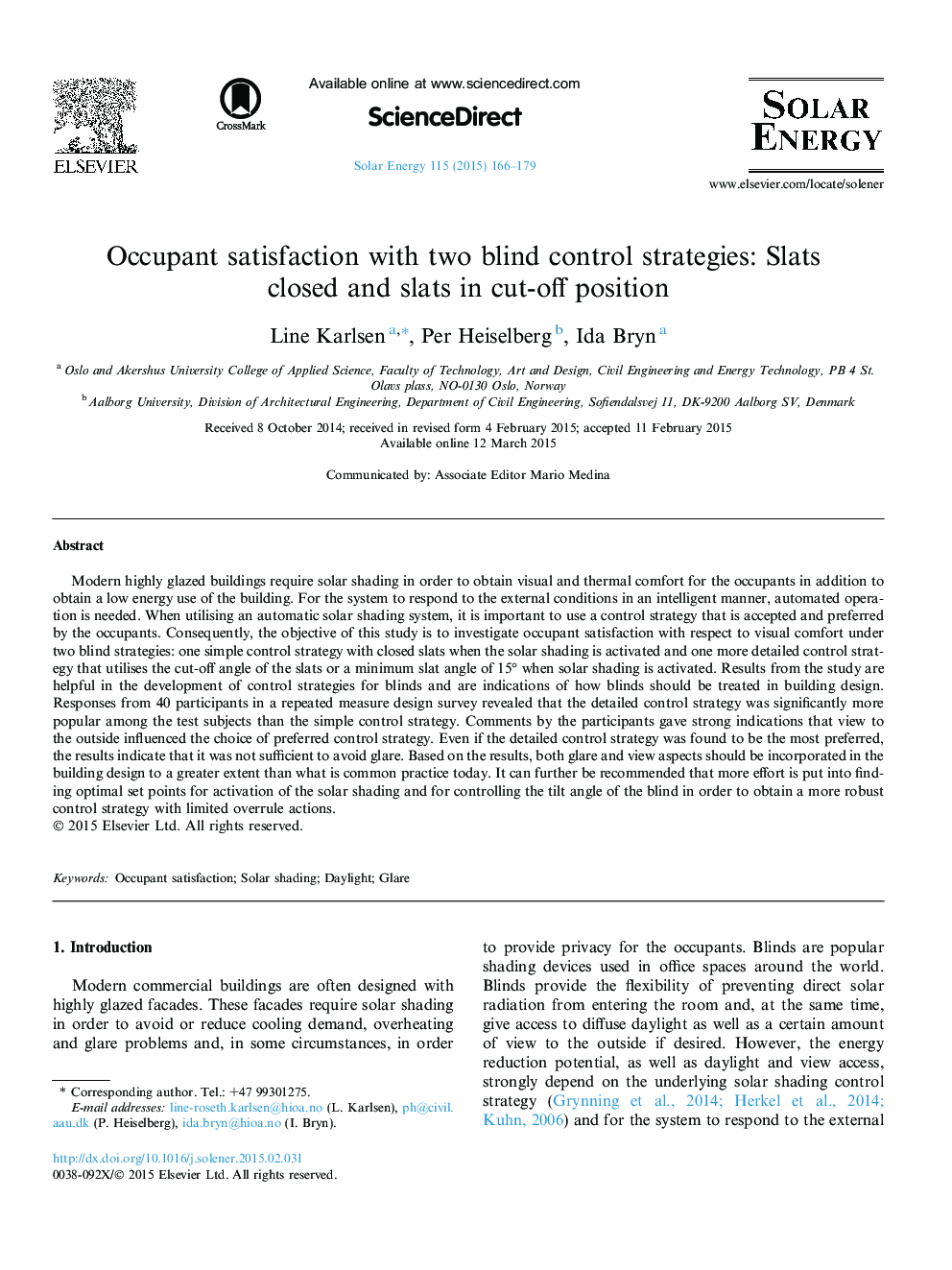| Article ID | Journal | Published Year | Pages | File Type |
|---|---|---|---|---|
| 7937931 | Solar Energy | 2015 | 14 Pages |
Abstract
Modern highly glazed buildings require solar shading in order to obtain visual and thermal comfort for the occupants in addition to obtain a low energy use of the building. For the system to respond to the external conditions in an intelligent manner, automated operation is needed. When utilising an automatic solar shading system, it is important to use a control strategy that is accepted and preferred by the occupants. Consequently, the objective of this study is to investigate occupant satisfaction with respect to visual comfort under two blind strategies: one simple control strategy with closed slats when the solar shading is activated and one more detailed control strategy that utilises the cut-off angle of the slats or a minimum slat angle of 15° when solar shading is activated. Results from the study are helpful in the development of control strategies for blinds and are indications of how blinds should be treated in building design. Responses from 40 participants in a repeated measure design survey revealed that the detailed control strategy was significantly more popular among the test subjects than the simple control strategy. Comments by the participants gave strong indications that view to the outside influenced the choice of preferred control strategy. Even if the detailed control strategy was found to be the most preferred, the results indicate that it was not sufficient to avoid glare. Based on the results, both glare and view aspects should be incorporated in the building design to a greater extent than what is common practice today. It can further be recommended that more effort is put into finding optimal set points for activation of the solar shading and for controlling the tilt angle of the blind in order to obtain a more robust control strategy with limited overrule actions.
Related Topics
Physical Sciences and Engineering
Energy
Renewable Energy, Sustainability and the Environment
Authors
Line Karlsen, Per Heiselberg, Ida Bryn,
